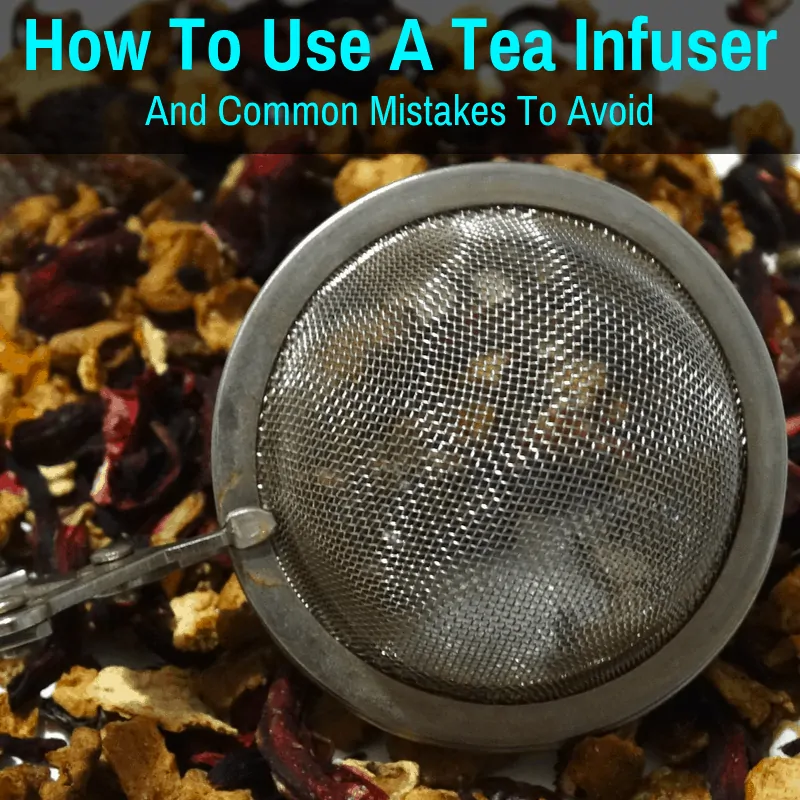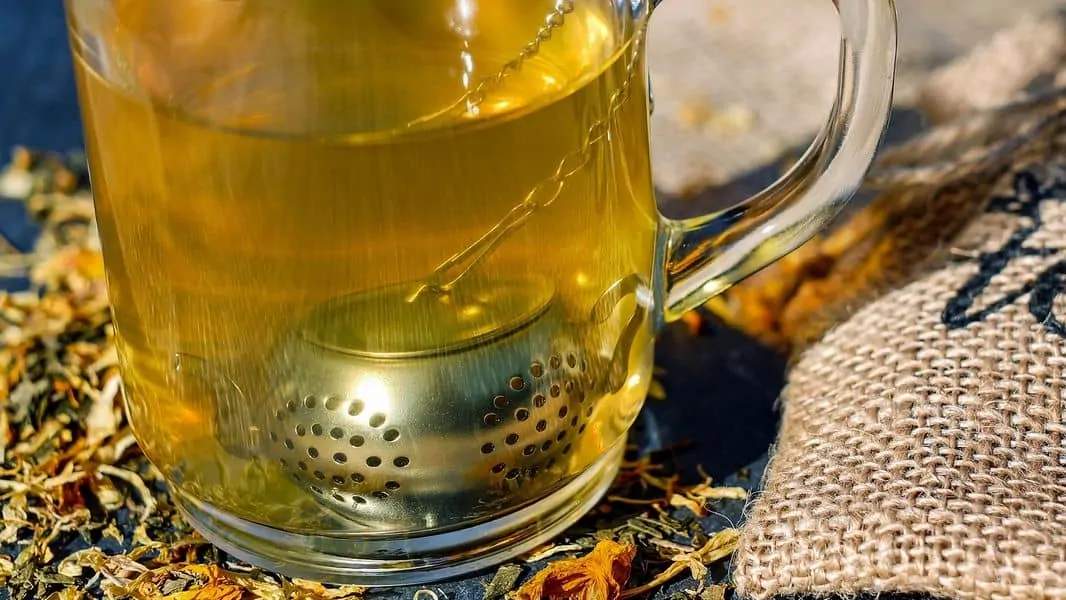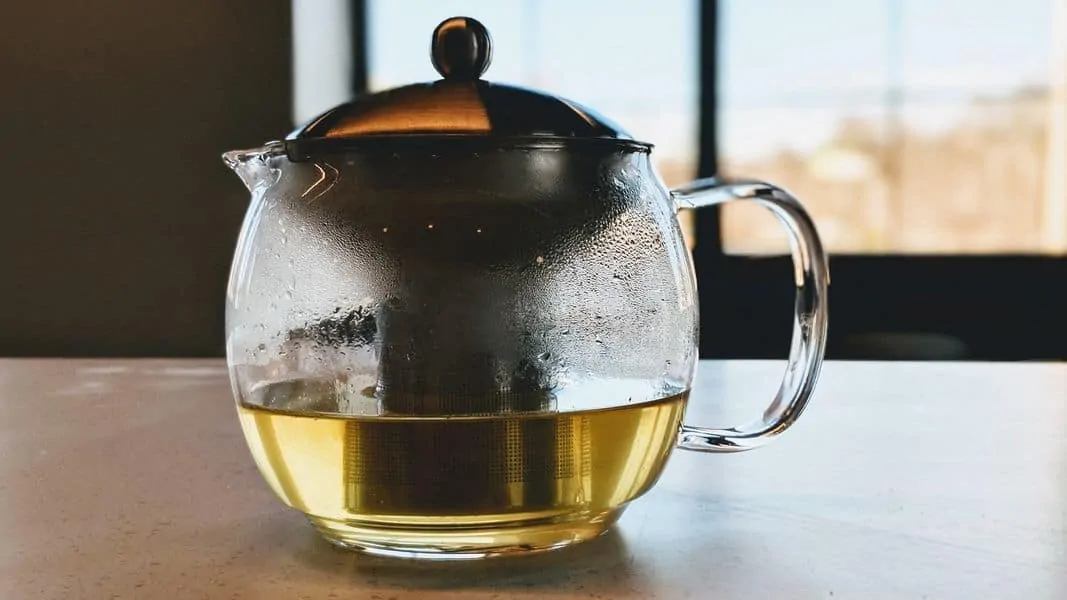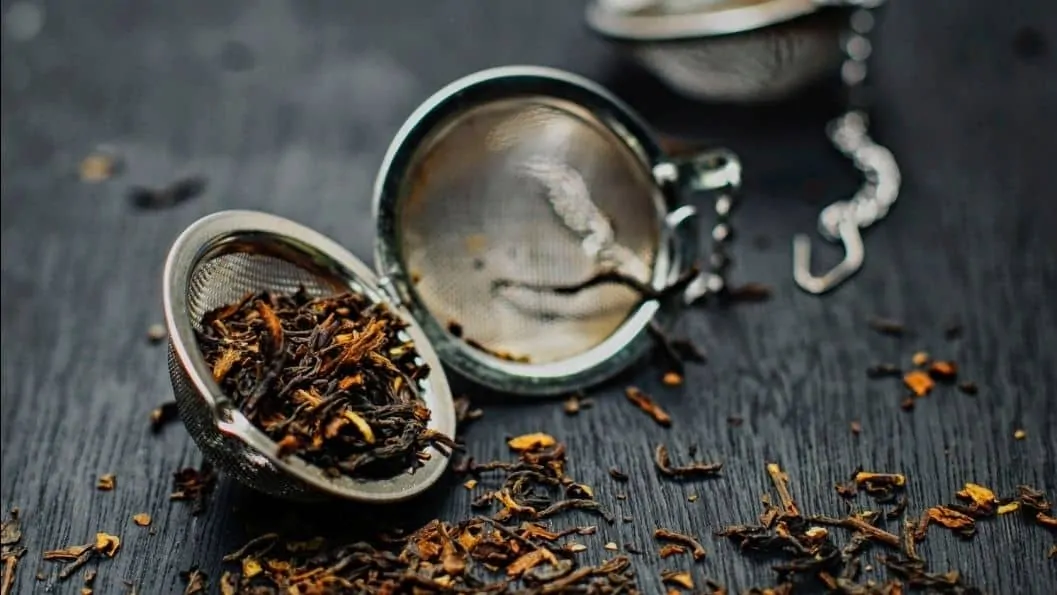 Want to add a kick of mint to your tea without having to chomp on leaves in every other sip?
Want to add a kick of mint to your tea without having to chomp on leaves in every other sip?
Interested in enjoying your exotic new blend without any floating tea particles dampening your drinking experience?
If you answered yes to either, try a tea infuser.
Brewing a cup of tea is therapeutic, but can become messy.
Tea infusers are every tea lover’s secret weapon to making a perfect cup of tea from loose leaves, and then drinking it and not coming away with loose bits of leaves clinging to your teeth.
They also allow you to mix and match flavors to create a customized blend. But you want to make sure you use your infuser correctly.
If you want to learn how to use a tea infuser, here is a quick guide.
Table of Contents
How To Use A Tea Infuser: The Math And Science behind A Brilliant Cup
Making a great cup of tea depends on finding the perfect balance of water temperature, amount of leaves and steeping time. The correct balance varies for each individual tea, so it will always involve some experimentation whenever you get a new tea.
Ratio And Time

The intensity of flavor depends on the amount of time your steep the leaves. The temperature of the water also impacts the release of flavor and the number of polyphenols and antioxidants that are released into the cup of tea. Ideally, you need only 1 to 1 ½ teaspoons of tea (3 grams) for every 8 ounces of water.
The longer you brew a cup, the more tannins and polyphenols are released into the cup, resulting in a more calming brew. But it also means a more bitter flavor. Whether you like that depends on your personal tastes.
When it comes to temperature, brew tea at any temperature between 170°F to 212°F for a smooth flavor. The ideal temperature depends on the type of tea. This article on brewing tea includes a table of idea brewing temperatures.
In general, the more processed a tea is, the higher the temperature to use. Thus, white tea should be steeped at the lowest temperatures, then green tea, then yellow, then oolong, then black and pu-erh.
Size And Shape
The leaves of tea need to expand to release health-boosting polyphenols, catechins, and other compounds that are known to improve our health and prolong life. It is, therefore, recommended that you choose infusers which have a bigger height and width since tea expands better in larger containers.
You are also likely to extract the best flavor and benefits when using a larger infuser.
Poorly designed infusers can impede the release of health-boosting compounds present in the tea leaf. A decently sized tea infuser that is designed to gives leaves space to expand is thus important for maintaining a good balance of flavor and benefits.
Research states that loose tea infuses better than tea contained in tea bags. Even without research, this should be obvious. So avoid the tea bags and get a basket-style infuser, since they generally provide the most space.
Guide To Using A Tea Strainer
Learning how to use a tea infuser is not rocket science. A little practice goes a long way in brewing a great-tasting cup every single time. The market is full of interesting and novel designs for tea infusers which is why you should conduct thorough research before you make a purchase.
Not all tea infusers work the same but good ones generally allow space for the healthy compounds in the leaves to release more effectively. Some popular designs include shapes such as spoons, tea tongs, ball, filter bag, silicone, tea tube, baskets, and more.
I’ll cover how to use the most popular tea filter styles below.
How To Use A Basket Tea Infuser

Crafted to look like a cup but with a mesh body, the tea infuser basket can fit snugly into any mug. The spacious design is the reason behind the success of these tea infusers.
To make tea with a tea infuser basket, simply place the infuser in any cup. Then, add your favorite tea into it. Follow by gradually adding water and letting it steep for a couple of minutes until the color changes.
You may stir the contents and then pull out the infuser once satisfied with the color of the tea. Since removing the infuser is a messy task, make sure you’re pulling it out over a sink to avoid leaks. I always give it a bit of time to drip out into the cup, then place it on a plate to save it for a subsequent infusion.
Spoons Tea Infuser And Tea Tongs Tea Infuser
If you’re usually in a hurry when brewing your tea, the spoon tea infuser is the best option for you. You can quickly stir a cup due to their spoon-shaped design dotted with punctured holes.
To use a spoon tea infuser, simply open the clamped mouth and add loose leaves to the infuser. Make sure to close the device securely before propping it into a cup. Add the spoon tea infuser into a cup filled with hot water. Make sure the punctured side rests inside your best tea cup.
Do not stir the infuser; instead, allow it to rest in the water for a couple of minutes. This will allow water to seep into the spoon-like device and release the therapeutic goodness. Once the water gets a colored tint, it is ready to consume. Be sure to follow the same process with tea tongs tea infuser as well.
Ball Tea Infuser

A ball tea infuser opens up to reveal two semi-circular halves. Available in two designs, the ‘egg infuser’ variant has a steel body with punctures. The other variant looks like a mesh ball held together with a clasp.
To make the perfect cup of tea, add tea into the infuser and secure it shut. Add the ball into the cup and rest the chain on the rim. Add steaming hot water gradually and let the ball rest in it undisturbed for a few minutes.
Take the infuser out of the cup when the water changes color. You can also try dipping the ball in your cup if you desire a stronger color and taste. Doing so would release the extra flavor that’s still stuck inside the infuser.
Filter Bags Tea Infuser
To prepare tea with this type of infuser, simply add teas leaves into the filter (whether you bought ready made bags and filled them or made DIY bags), fasten it and dunk it in a cup of freshly boiled water. The tea is ready as soon as the water changes color.
The filter bag tea infuser can become a bit messy, since it does not hang on the cup. This type of infuser has to be submerged completely in the cup. As you might have guessed, removal can be messy. This is also the reason why most people tend to over-brew their tea.
To avoid this issue, make sure to remove the filter bags tea infuser with a spoon or a fork, and discard it in the trash. Do this as soon as the tea is of the color of your preference.
Silicone Tea Infuser
Shaped like anything you like (from cartoon characters, to fruit, to actual tea bags or anything else) and made of food-grade silicone, the silicone tea infuser is a convenient tool. The infuser body is covered with puncture holes, allowing the infuser to do its magic.
Before you use a silicone tea infuser, it is best to dissolve the layer of glossy wax on it. Simply boil the infuser in hot water until it separates. To prepare tea, open the base of the infuser and add tea leaves. Add the infuser in a cup of boiling hot water and let it rest until the tea reaches your desired color.
Silicone tea infusers work moderately well to quickly make a cup of tea. However, opt for an infuser with larger holes so the water effectively reaches and infuses the tea.
Using Tea Infusers: What to Avoid
Nothing comes close to the satisfaction of making your own blends. It is also a relief from consuming potentially dangerous compounds lurking in ready-made tea bags, and contributing to the ever-growing landfills around the world, unless you know what to do with old used tea bags.
Tea is a natural healer and must be consumed in its natural state free from toxic elements. Any infusers you deem risky should be avoided.
Infusers constructed from dangerous materials such as aluminum can be toxic for the body’s central nervous system. This is because aluminum is renowned for causing troubles with cognition in children and believed to contribute towards Alzheimer’s disease.
Some infusers can also have traces of aluminum in them, even though they are primarily made from safe materials. We advise you ensure that the infusers you are using are made from materials that are not dangerous.
Although it is safe to prepare tea with food-grade silicone, some silicone infusers have a waxy layer of polish on them. As mentioned above, it is important to boil them before the first use to mitigate the risk of ingesting harmful chemicals.
You should also avoid making tea directly in a kettle. It is much better to only use the kettle to heat the water, then pour it into a teapot or mug for brewing.
How To Use Tea Strainer: Final Thoughts
Using infusers is a simple process that does not require any rocket science. Be sure to choose a relatively larger sized infuser for better release of flavor and healthy compounds.
With that said, it is important to remember that just about any infuser will do the trick. As long as the width and size are large enough to allow the leaves to swell, you won’t ever have to settle for a bad cup of tea.
If you need a cheap infuser that maximizes the fragrance, taste, and release of polyphenols in your tea, a basket infuser would be a good investment.
We compare the best infusers on the market in this article.
Lastly, make sure to read the instructions on your tea boxes and follow them closely. This will ensure you always end up with fantastic results.
very informative article. lot of things I didn’t know. thank you….
I recently bought some loose Rooibos tea. Some of it leaked through the infuser as soon as I started pouring the boiling water into the mug. I had to strain it into another cup. My infuser is stainless steel.
Sounds like you’ll need an infuse with a finer mesh for your tea. That said, having some leaves in your tea when you drink it isn’t the end of the world either.
Hello
Three china mugs have cracked. Could my metal tea infuser be the culprit?
The cracks were all the same, along the base and up the sides.
What do you think?